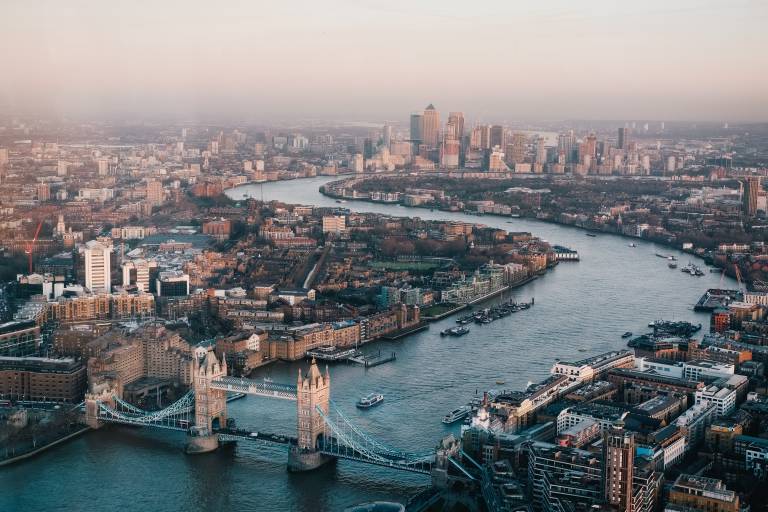CEGE lecturer’s Urban Heat Islands paper published in Nature
26 September 2019
Dr Gabriele Manoli, CEGE’s new Lecturer in Environmental Engineering, was lead author on a paper about urban heat islands, published in the prestigious journal Nature in September 2019.

"Magnitude of urban heat islands largely explained by climate and population" was the culmination of work undertaken by Dr Manoli during his time at ETH Zurich, alongside colleagues Dr Simone Fatichi, Kailiang Yu, Prof Tom Crowther and Prof Dr Paolo Burlando; Dr Markus Schläpfer and Naika Meili from ETH-Future Cities Laboratory Singapore; Prof Gabriel Katul of Duke University, and Prof Elie Bou-Zeid from Princeton.
Cities are often warmer that the surrounding rural land - a phenomenon known as Urban Heat Island (UHI) effect. UHIs can increase the risk of heat-related mortality, with implications for energy consumption and climate adaptation policies.
Dr Manoli’s team analysed data from more than 30,000 cities and surrounding rural areas worldwide, taking into account population size, annual precipitation levels and average summer temperatures. The bigger the city and the larger the rainfall, the more pronounced the UHI effect is. This is because greater rainfall encourages plant growth in the surrounding area, making this cooler than the city. Such an effect is at its strongest when annual rainfall averages c.1500 millimetres, as in Tokyo, but it does not increase further with more rain.
For very dry regions – for example a city like Phoenix, Arizona in the USA - carefully targeted planting could achieve cooler urban temperatures compared to the almost desert-like surrounding countryside. By comparison, a city surrounded by tropical forests, such as Singapore, would need far more green spaces to reduce temperatures, but this would also create more humidity. In tropical cities other cooling methods are therefore expected to be more effective, such as increased use of shade, wind circulation and new heat-dispersing materials. As Dr Manoli comments, "There is no single solution to reduce the Urban Heat Island effect. It all depends on the surrounding environment and regional climate characteristics.”
One main benefit from this study will be a preliminary classification of cities, in the form of a simple model that will guide planners on possible approaches to mitigate the UHI effect. Despite this, Dr Manoli explains that “searching for solutions to reduce temperatures in specific cities will require additional analysis and in-depth understanding of the microclimate. Such information, however, is based on data and models available to city planners and decision-makers only in a handful of cities, such as Zurich, Singapore or London.”
Currently analysing data from other periods of the year, Dr Manoli is also studying which types of plant are most suitable for reducing temperatures. Support provided by the Branco Weiss Fellowship allowed Dr Manoli to work on this project with scientists from physics, urban studies and social sciences backgrounds, with a specific focus on interdisciplinary research topics.
Dr Manoli joined UCL Civil, Environmental and Geomatic Engineering (CEGE) in August 2019, and will be coordinating the module Urban Flooding and Drainage, offered as an optional module on CEGE's Engineering (Civil) MEng programme, and numerous CEGE Master's degrees.
The urban heat islands paper was published in Nature on 4 September 2019, and can be accessed in the Links section below. The project has garnered much media interest, links to which can also be found below.
Links
Please note, some links lead to external sites.
- Magnitude of urban heat islands largely explained by climate and population – Nature article
- ETH Zurich press release
- Dr Manoli's CEGE profile
- Branco Weiss Fellowship website
- UCL Civil, Environmental and Geomatic Engineering
- Engineering (Civil) MEng programme page
- CEGE Postgraduate taught programmes
In the Media
- CBC
- Der Standard
- El Independiente
- El Periodico de Mexico
- EOS Earth and Space Science News
- Europapress
- Nature podcast
- Nature World News
- New Orleans Public Radio
- ORF
- Phys.org
- Princeton News
- Science Daily
- Wissenschaft
- ZME Science
Image
- Credit: Photo by Benjamin Davies on Unsplash
 Close
Close

